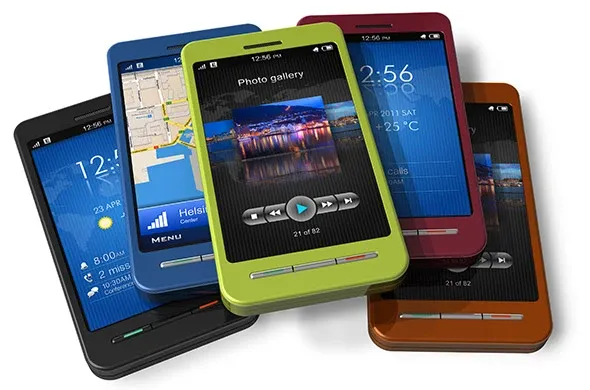Worldwide IT Spending to Grow Eight Percent in 2024
Worldwide IT spending is expected to total $5.06 trillion in 2024, an increase of 8% from 2023, according to the latest forecast by Gartner.

Coming off the smartphone market's lowest year-over-year growth of 2.5% in 2016, a new forecast from the IDC Worldwide Quarterly Mobile Phone Tracker shows worldwide smartphone shipments rebounding in 2017 and beyond. While growth is expected to remain in the low single digits, IDC predicts shipment volumes to grow 4.2% in 2017 and 4.4% in 2018 with a compound annual growth rate (CAGR) of 3.8% over the 2016-2021 forecast. Shipments are forecast to reach 1.53 billion units in 2017 and grow to 1.77 billion in 2021.
From a platform perspective, IDC doesn't expect much change throughout the forecast with Android accounting for roughly 85% of smartphone shipments and Apple making up the rest. The outlook for Microsoft-based smartphones remains virtually nonexistent given the lack of OEM partner support. Although Android growth will gradually decline, IDC does not yet see a point where shipments will contract year over year given the demand for new features such as augmented and virtual reality. For iOS, 2016 was the first time Apple experienced a year-over-year decline in shipments with iPhone volumes falling 7.0%. IDC expects a strong rebound in iPhone volumes in 2017 following the launch of its next set of devices with many rumored technical changes as well as a strong push for the 10th anniversary.
"We continue to get questions about longer smartphone life cycles given the number of markets with high penetration levels, but so far we are not seeing any trend in this direction," said Ryan Reith, program vice president with IDC's Worldwide Quarterly Mobile Device Trackers. "When you break down the market you have many different trends occurring. In some low-cost markets like China, we are beginning to see users gradually buying up to a more premium device. This is likely caused by poor satisfaction from previously owned devices and demand for better feature sets. And in mature markets, the premium space is as competitive as ever. This is illustrated by the number of high-end smartphone announcements at MWC this week.
For Android the biggest markets driving volume continue to be the Middle East & Africa (MEA), Central & Eastern Europe (CEE), and Asia/Pacific (excluding Japan)(APeJ) with average selling prices (ASP) in the $150-$200 range. In more mature markets like North America and Western Europe, the ASP can be as much as double, which is a big reason many device OEMs are launching flagship models in these markets first. Additionally, as more and more Android OEMs figure out ways to produce large screen smartphones at a very low cost, IDC expects phones with a display of five inches and greater to grow from 75% of Android shipments in 2016 to 91% in 2021.
Apple continues to do roughly 50% of its iPhone volume between North America and Western Europe, but Asia/Pacific (excluding Japan) continues to grow as a share of Apple's volumes mainly driven by continuous demand in China. That region accounted for roughly 30% of 2016 iPhone shipments and is expected to grow to about 36% in 2021. As previously mentioned, IDC believes 2017 will be a turnaround year for iPhone volumes with shipments expected to grow 4.9% over 2016.
Windows Phone continues to decline as a share of the smartphone space as many OEMs have given up producing phones for the platform. As a result, IDC expects 2017 volumes to decline 69.5% to just 1.8 million units. It is unclear at this time if Microsoft has a clear plan to persuade OEMs to get back on board with the platform, or if it plans to release a device itself like it did with Surface devices. Until this production question is addressed, IDC doesn’t see a clear path to turning around the platform.
Smartphone Platform Shipments, Market Share, and 5-Year CAGR, 2017 and 2021 (shipments in millions) | |||||||
Platform | 2017 Shipment Volume* | 2017 Market Share* | 2017 YOY Growth* | 2021 Shipment Volume* | 2021 Market Share* | 2021 YOY Growth* | 2016-2021 CAGR* |
Android | 1,305.0 | 85.0% | 4.6% | 1,513.4 | 85.3% | 3.3% | 3.9% |
iOS | 226.0 | 14.7% | 4.9% | 258.8 | 14.6% | 1.9% | 3.7% |
Windows Phone | 1.8 | 0.1% | -69.5% | 0.8 | 0.0% | -8.4% | -33.8% |
Others | 2.0 | 0.1% | -56.0% | 1.1 | 0.1% | -5.4% | -24.7% |
Total | 1,534.8 | 100.0% | 4.2% | 1,774.1 | 100.0% | 3.1% | 3.8% |
Source: IDC Worldwide Quarterly Mobile Phone Tracker | |||||||